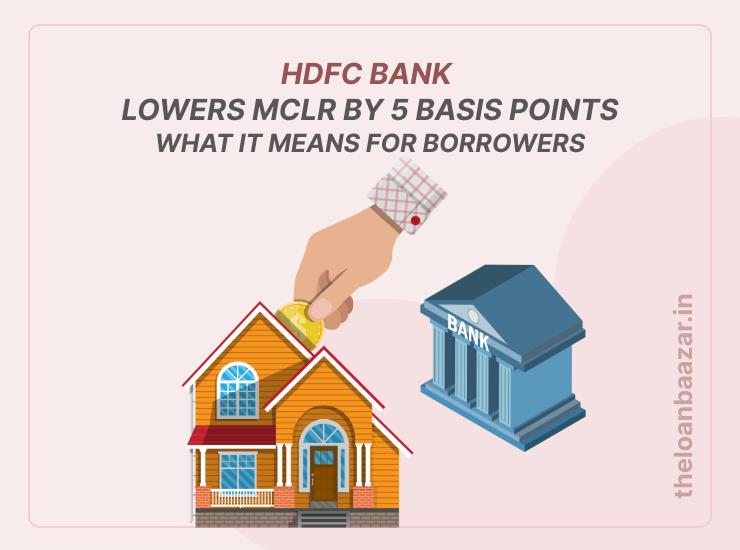HDFC Bank, one of India’s largest private sector lenders, has announced a reduction of up to 5 basis points in its Marginal Cost of Funds-based Lending Rate (MCLR) across select tenures.
While the base rate remains unchanged, this move provides some relief to existing and new borrowers whose loans are directly linked to MCLR, including home loans, personal loans, and business loans.
This development comes at a crucial time when borrowers are closely watching lending rate movements amid market volatility.
What is MCLR and Why Does It Matter?
The Marginal Cost of Funds-based Lending Rate (MCLR) is the minimum interest rate that a bank can lend at. Introduced by the Reserve Bank of India (RBI) in 2016, MCLR replaced the older base rate system to ensure faster transmission of policy rate changes to borrowers.
- Lower MCLR = Lower EMIs for loans linked to it
- Applicable for home loans, personal loans, car loans, and certain business loans
- Revised typically on a monthly basis by banks
Key Highlights of HDFC Bank’s MCLR Cut
- Rate Reduction – Up to 5 basis points (0.05%) on select tenures
- Effective for Borrowers – Loans linked to MCLR such as home loans
- No Change in Base Rate – The base rate remains steady
- PLR and FD Rates Announced – Updates on Prime Lending Rate (PLR) and Fixed Deposit (FD) rates were also shared
How Does This Impact Borrowers?
The reduction in MCLR directly impacts borrowers with floating-rate loans tied to this benchmark.
For example:
- A borrower with a home loan of ₹50 lakh could see a marginal reduction in their monthly EMI depending on the tenure.
- New borrowers may find loans slightly more affordable.
- Existing borrowers will see the benefit only when their loan reset date arrives.
HDFC Bank’s FD & PLR Update
Apart from the MCLR cut, HDFC Bank has also released updates on:
- Prime Lending Rate (PLR): Affects loans not linked to MCLR but to PLR.
- Fixed Deposit (FD) Rates: Slight adjustments based on tenure and market conditions.
This ensures that while borrowers get relief, depositors also have clarity on their expected returns.
Why Banks Reduce MCLR?
Banks revise MCLR based on several factors:
- Cost of funds (repo rate, deposit rates)
- Operating expenses
- Cash reserve ratio (CRR) requirements
- Market competition
A cut in MCLR often signals that the cost of borrowing is reducing, benefiting loan seekers.
Advantages of MCLR-Linked Loans
- Transparent rate mechanism
- Faster reflection of RBI policy rate changes
- Opportunity for borrowers to switch from fixed to floating rates
- Competitive advantage compared to older base-rate loans
Q1. What is the new MCLR announced by HDFC Bank?
HDFC Bank has reduced MCLR by up to 5 basis points for select tenures. Exact rates may vary depending on loan type and tenure.
Q2. Will my EMI reduce immediately?
Not immediately. The change will reflect on your next loan reset date if your loan is linked to MCLR.
Q3. Are base rate loans affected?
No. The base rate remains unchanged. This cut is applicable only for MCLR-linked loans.
Q4. How does this impact new borrowers?
New borrowers applying for MCLR-linked loans may get slightly cheaper EMIs compared to previous months.
Q5. Can I switch from base rate to MCLR?
Yes, customers on older loan structures can request a switch, though banks may charge a nominal conversion fee.
Most Read in Articles
HDFC Bank Cuts MCLR by 5 bps — Borrowers Benefit in 2025
U.S. Banks May Mask Troubled Loans Under New Rules
RBI Fines Bandhan Bank ₹44.7 Lakh













